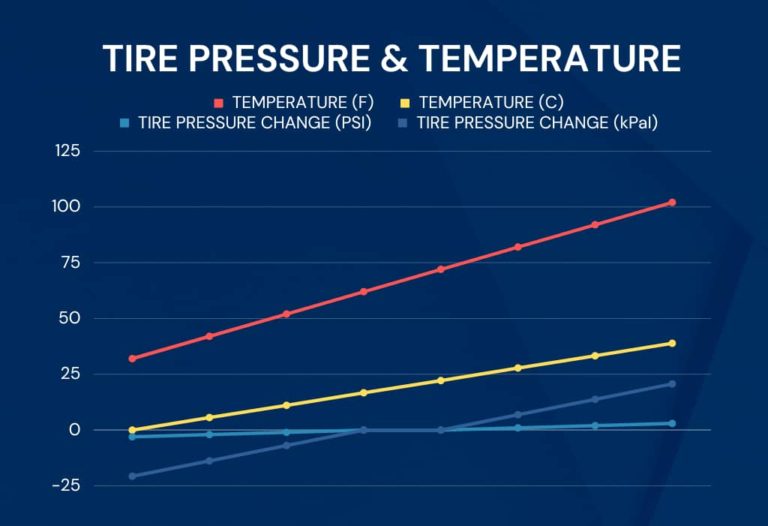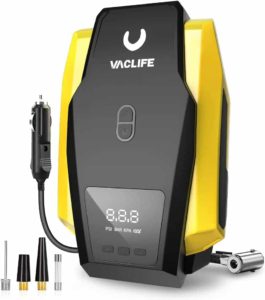It’s essential to clarify up front that the Kia Seltos doesn’t come equipped with a tire pressure reset button. So, if you come across any videos or online articles suggesting otherwise, you can confidently dismiss them as they’re not accurate. But don’t fret! By following the guidelines laid out in this article, you’ll have no trouble at all in turning off that pesky tire pressure light!
What is the Kia Seltos TPMS?
The tire pressure monitoring system (TPMS) in the Kia Seltos is an underrated feature designed with your safety in mind. It’s like a vigilant co-pilot, continuously keeping an eye on the pressure levels in your tires as you drive. If the pressure in any tire dips below the recommended level, the system alerts you through a notification on your dashboard. This early warning allows you to address any potential issues, such as underinflation, before they impact your vehicle’s performance or safety. So, it’s more than just a feature – it’s peace of mind on wheels. To check your tire pressure: press the mode button on your steering wheel and scroll over to the information mode to see your current pressures. Or use an accurate tire pressure gauge. The Kia Seltos tire pressures are below.
2024 Kia Seltos Tire Pressure
Tire Size | FRONT PSI | REAR PSI |
205/60R16 | 33 | 33 |
215/55R17 | 35 | 33 |
235/45R18 | 33 | 33 |
SPARE TIRE | 60 | 60 |
Steps to Reset the Kia Seltos Tire Pressure Light
The Kia Seltos does not have a tire pressure reset button.
When the tire pressure light on the dashboard lights up, pull over and check your tire pressure right away.
Determine which tire is causing the tire pressure light to turn on and adjust the tire pressure accordingly.
Fill your tire to the exact recommended pressures. I cannot emphasize this enough, accuracy is key.
Drive your Kia Seltos. Drive for a few minutes at speeds over 20 Mph.
If the light doesn’t go off right away, re-check your tire pressure to make sure they are all at the exact pressure you set them to. If they are down in pressure, you probably have some sort of tire leak.
If the pressures are at the exact pressure you set them to and the tire light still won’t go off, over fill your tires.
We recommend filling your problem tire with 45 Psi or about 10 Psi over the recommended pressure. With the tire overfilled, drive the car again for 10 or 15 minutes. This will turn off the tire light.
Now that the tire light is off, readjust the pressure back to the recommended pressure.
How Does the Kia Seltos TPMS Work?
Sensors: The Kia Seltos’s tire pressure system has sensors mounted on the end of each valve stem to measure air pressure and temperature of each tire.
Wireless data transmission: The sensors wirelessly transmit the tire pressure data to the car’s TPMS control unit and ECU/ECM using radio frequencies.
Continuous monitoring: The TPMS control unit continually analyzes and measures the tire pressure data received from the sensors.
Pressure comparison: The system compares the measured tire pressure against the recommended levels set by Kia for the Seltos.
Warning activation: If the measured tire pressure is below the recommended levels, the TPMS triggers a warning.
Dashboard display: The TPMS warning light appears on the dashboard LCD with a yellow exclamation point.
Tire identification: The Kia Seltos’s tire pressure system indicates which specific tire is experiencing a pressure issue.
Regular monitoring: The TPMS continuously monitors and measures your tire pressure while driving.
Kia Seltos TPMS Malfunction Indicator
Your Kia Seltos also has a special warning light to alert you to potential issues with your tire pressure monitoring system (TPMS). This warning light displays a yellow exclamation point, identical to the tire warning light. If there is a problem with the TPMS, the light will flash for approximately one minute before staying on. This sequence will occur every time you start your car until the issue is resolved. So, when your tire light is flashing or blinking, the system may not be able to accurately detect low tire pressure. In conclusion, a blinking tire pressure light means there is a malfunction within the TPMS itself, rather than an actual tire pressure issue. Often, this is due to a defective pressure sensor in one of your tires. To determine which sensor is faulty, use a TPMS diagnostic tool.
What are Common Causes for the Tire Pressure Light to Turn On?
Seasonal temperature changes: A drop in ambient temperature can cause tire pressure to decrease, triggering the warning light.
Tire puncture or leak: A sharp object like a nail or screw may puncture a tire, causing significant air loss which will of course activate the warning light.
Faulty tire pressure sensor: Damaged or malfunctioning sensors may provide inaccurate readings, resulting in a false alert. The only way to determine which sensor is faulty is to scan each sensor with a TPMS diagnostic tool.
Valve stem issues: A damaged or leaking valve stem can lead to gradual pressure loss and eventually activate the tire pressure light. They make kits to replace the rubber gasket that usually goes bad.
Tire damage: Impact from potholes or hitting a curb can cause structural damage like tire bubbles, leading to pressure loss.
Sensor battery life: TPMS sensors are battery-powered, and over time, batteries die. (they usually last anywhere from 5-10 years) This will cause the tire pressure light to turn on. Again, you must use a diagnostic tool to determine which sensor is dead or dying. Sensor batteries are not replaceable, you must replace the entire sensor.
Recent tire rotation or replacement: If the tires have been recently rotated or replaced, the TPMS may need recalibration to avoid false alerts. Sometimes the vehicle’s computer may think the front tires are in the rear and rear in the front after a rotation.
Wheel or rim issues: Damaged, corroded, or cracked wheels or rims can lead to air leaks and pressure loss. This is very common with low profile tires.
Altitude changes: Climbing or descending in elevation can affect tire pressure and trigger the TPMS warning.
Natural pressure loss: Tires lose air pressure over time due to temperature changes and permeation. Tire dry-rot will happen to tires that sit for long periods of time.
Electrical problems or software issues within the car’s TPMS system. Occasionally the system may have a software update.
What Happens When Tires are Underinflated?
When the tires on your Kia Seltos are underinflated, it can lead to several issues that affect your driving experience. Firstly, underinflated tires reduce your control over the vehicle. They don’t respond as quickly or accurately as they should, making steering, braking, and maneuvering more challenging. You might notice a distinct lack of stability, especially when making turns or braking. Secondly, underinflated tires can lead to a decrease in fuel efficiency. Your car needs to work harder to move forward, leading to higher fuel consumption. Thirdly, underinflation can cause your tires to wear out prematurely. They tend to wear unevenly, which reduces their lifespan significantly. Lastly, underinflated tires are more likely to overheat due to increased friction with the road. This excess heat can potentially cause tire blowouts, which can be very dangerous. So, if you notice your tire pressure light coming on or suspect that your tires are underinflated, it’s crucial to check and adjust your tire pressure immediately!
How Does the Weather Affect Tire Pressure?
The weather plays a significant role in determining your tire pressure. It’s quite simple when you think about it – as the temperature dips, so does the air pressure in your tires. This is because the colder conditions cause the air inside your tires to contract. Conversely, when the temperature rises, so does your tire pressure because the warmer temperatures cause the air in your tires to expand. It’s not uncommon to see your tire pressure light come on during a cold run or a sudden heatwave. Just remember, for roughly every 10-degree change in temperature, your tire pressure can drop by about 1 Psi. So, it’s always a good idea to check your tire pressure whenever there’s a significant change in the weather.
How to Adjust Your Tire Pressure
Get a high-quality tire gauge.
Make sure to check the tire pressure when the tires are cold. “Cold” means your vehicle has been idle for at least three hours or driven less than 1 mile.
Take off the valve cap from the tire valve stem.
Push the tire gauge firmly onto the valve to measure the pressure.
Compare the pressure reading with the recommended pressure on the tire information label.
If the pressure is lower than the recommended pressure, add air.
If the pressure is too high, let out some air by pressing the metal stem in the center of the tire valve. You can use any object like a screwdriver to do this. Be gentle.
Recheck the tire pressure with the gauge.
Don’t forget to put the valve caps back on to prevent leaks and keep dirt and moisture out.
When Should You Adjust Your Tire Pressure?
The optimal time to adjust your Kia Seltos’s tire pressure is in the morning or when your vehicle has been parked for a few hours. This is because your tires should be cold when you’re checking and adjusting the pressure. When you drive, the tires heat up, which can cause the air inside to expand and give a higher pressure reading. Do not adjust your tire pressure when your tires are hot, it will not be accurate and can lead to more issues! To get the most accurate tire pressure measurement, make sure your car has been parked for a few hours.
What are the Benefits of the Kia Seltos TPMS?
The tire pressure monitoring system (TPMS) in your Kia Seltos is like a guardian angel for your tires. Here’s why it’s so great:
Safety First: The TPMS is on constant watch, checking if your tires have the right amount of air. If the pressure drops, it’s quick to alert you with a light on your dashboard. This heads-up warning can prevent unexpected flat tires or even potential accidents.
Fuel Efficiency: When your tires have the right pressure, your car doesn’t have to work as hard, meaning it uses less fuel. So, by helping you keep your tires properly inflated, the TPMS also helps your wallet.
Longer Tire Life: Tires with the correct pressure wear down more evenly and last longer. So, thanks to the TPMS, you won’t need to replace your tires as often.
Smoother Ride: Lastly, well-inflated tires make for smoother, more comfortable drives.
Conclusion
To wrap it all up, the tire pressure monitoring system (TPMS) in your Kia Seltos plays a pivotal role in maintaining your vehicle’s safety and efficiency. It keeps a continuous check on your tire pressure and quickly alerts you if it’s too low. Remember, your Seltos doesn’t have a tire pressure reset button, so rely on the guidelines in this article to properly manage your tire pressure. So, check your pressures manually at least once a month and before long trips, stay safe on the road and keep those tires properly inflated! Everything in this article is applicable to all Kia Seltos models and trims, including 2019 – 2024 versions.





